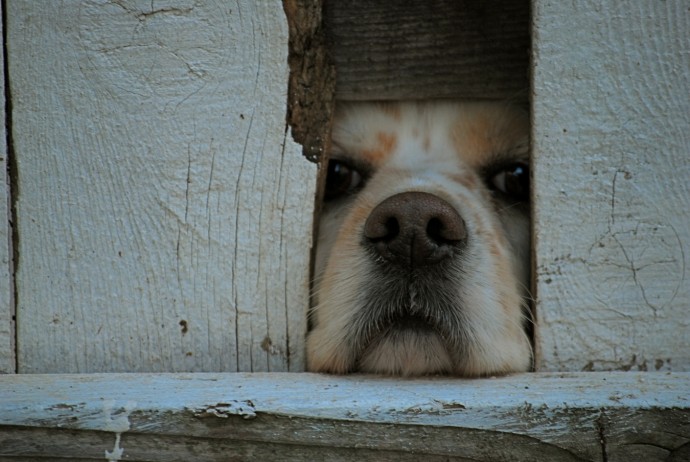The authors of the Convention are convinced that in the breeding of several breeds or types of pet animals, mammals and birds, insufficient account is taken of anatomical, physiological and behavioural characteristics which are likely to put at risk the animals’ health and welfare.
They demand that if persuasive measures are not sufficient, governments should consider prohibiting the breeding and or phasing out the exhibition and the selling of certain types or breeds when characteristics of these animals correspond to what they consider to be harmful defects such as those presented in the following Appendix:
Appendix
Set maximum and minimum values for height or weight of very large or small dogs, respectively, to avoid skeleton and joint disorders (e.g. dysplasia of hip joints or elbows, fractures, luxation of elbow or patella, persistent fontanella) and collapse of trachea;
Set maximum values for the proportion between length and height of short-legged dogs (e.g. Bassethound, Dachshund) to avoid disorders of the vertebral column;
Set limits to the shortness of skull, respectively nose, so that breathing difficulties and blockage of lachrymal ducts are avoided, as well as disposition to birth difficulties (e.g. Persian cats, especially the “extreme type”, Bulldogs, Japan Chin, King Charles Spaniel, Pug, Pekin Palacedog);
Prevent the occurrence of:
- a persistent fontanella (e.g. Chihuahua) to avoid brain damages;
- abnormal positions of legs (e.g. very steep line of hind legs in Chow Chow, Norwegian Buhund, Swedish Lapphund, Finnish Spitz; bowed legs in Bassethound, Pekin Palacedog, Shi Tzu) to avoid difficulties in movement and joint degeneration;
- abnormal positions of teeth (e.g. brachygnathia in Boxers, Bulldogs, Persian Cats) to avoid difficulties in feeding and caring for the newborn;
- abnormal size and form of eyes or eyelids (e.g. ectropium: Bassethound, Bloodhound, St. Bernard; small deep lying eves with disposition to entropium: Airedale Terrier, Australian Terrier, Bedlington Terrier, Bullterrier, Bloodhound, Chow Chow, English Toy Terrier, Jagdterrier, Newfoundland, Shar Pei; large, protruding eyes: Boston Terrier, Cavalier King Charles Spaniel, Dandie Dinmont Terrier, Brussels Griffon, Japan Chin, King Charles Spaniel, Pug, Pekin Palacedog, Shi Tzu, Tibet Terrier) to avoid irritation, inflammation and degeneration as well as prolapse of eyes;
- 1 The breeds mentioned above are only examples in which these problems may occur.
- very long ears (e.g. English Cocker Spaniel, Bassethound, Bloodhound) to avoid disposition to injuries:
- markedly folded skin (e.g. Bassethound, Bulldog, Bloodhound, Pug, Pekin Palacedog, Shar Pei) to avoid eczema’s and in the case of furrows around the eyes irritation and inflammation of eyes;
- avoid or, if it is not possible to eliminate severe defects, discontinued breeding of:
- animals carrying semilethal factors (e.g. Entlebucher Cattledog)
- animals carrying recessive defectgenes (e.g. homocygotic Scottish Fold Cat: short legs, vertebral column and tail defects)
- hairless dogs and cats (lack of protection against sun and chill, disposition to significant reduction of number of teeth, semilethal factor)
- Manxcat (movement disorder, disposition to vertebral column defects, difficulties in elimination of urine and faeces, semilethal factor)
- cats carrying “dominant white” (significant disposition to deafness);
- dogs carrying “Merle factor” (significant disposition to deafness and eye disorders, e.g.: Blue merle Collie, Merle Sheltie, Merle Corgie, Merle Bobtail, Tigerdogge, Tigerteckel).
And of course you need to add to this list, all the current breeds which are docked as whelps and/or have their dew claws removed as whelps.
Whilst most of the allegations appearing in the Appendix will be rubbished by knowledgeable breeders and veterinary surgeons alike, the danger is that governmental bodies might be led to believe that Conventions are originated by professionals who know better.
What would happen to pedigree and working dogs in the UK if the above was adopted? We dread to imagine.
The Royal College of Veterinary Surgeons is already receiving a stream of letters from respected veterinary surgeons who are horrified by the Colleges desire to have this Convention adopted in the UK.
